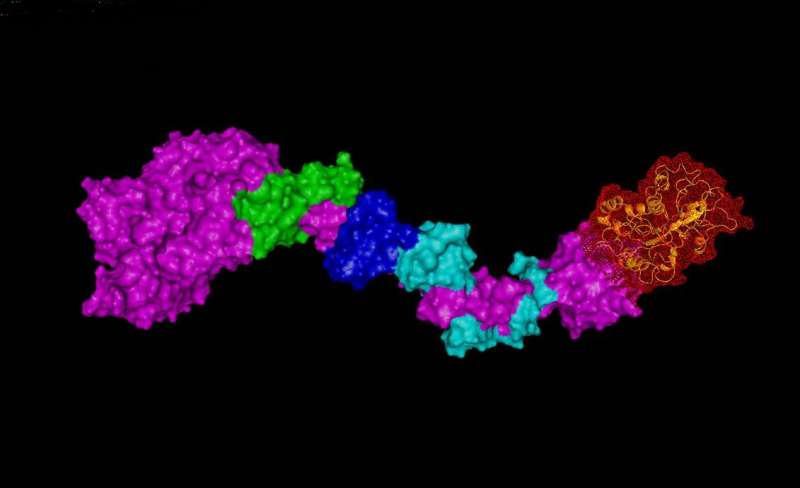Freight train: Myo1c provides cellular transport for protein crucial to kidney filtration

The motor protein Myo1c binds to Neph1, a protein crucial for ensuring effective filtration by the kidney, and serves as one mode of its cellular transport, according to findings by investigators at the Medical University of South Carolina (MUSC) and their collaborators reported in the May 16, 2016 issue of Molecular and Cellular Biology.
Neph1 is essential for the maintenance of podocytes—neuron-like cells with long finger-like projections that wrap around the glomerular capillaries, serving as the final barrier between the blood and the urine. When podocyte structure fails, the kidney is no longer able to act as an effective filter, and excessive protein escapes the capillaries into the urine. The resulting proteinuria can lead to kidney failure over time. Faulty podocyte structure and filtration also characterize diabetic nephropathy and glomerular diseases (e.g., focal and segmental glomerular sclerosis), which were once considered orphan diseases but have become more prevalent in recent years as sedentary lifestyles and diets high in processed foods have become commonplace.
The MUSC investigators and their collaborators used small-angle X-ray scattering (SAXS) to determine the full structure of Myo1c and its complex with Neph1. The crystallographic structure of two of Myo1c's three segments had previously been determined but never that of the entire protein or the complex it forms with another protein.
"Having a 3D crystal structure is more like a snapshot of the protein in three-dimensional space but of more physiological relevance is understanding how the proteins behave in solution," says senior author Deepak Nihalani, Ph.D., an Associate Professor in the College of Medicine, Division of Nephrology, at MUSC. "We did a solution-based structure where we could actually get the structure of the entire protein and study that structure in complex with a cargo protein (Neph1)."
Nihalani's team sent solutions of purified Myo1c to Brookhaven National Laboratory for SAXS analysis, examined the resulting SAXS intensity profiles to determine the structure of Myo1c in solution, and used molecular modeling to fill in the gaps of the 3D crystal structure. They also showed that Neph1 binds to the C tail region of Myo1c.
These findings suggest that Myo1c uses the actin cytoskeleton as a "track" for cellular transport of its Neph1 cargo (bound to its C tail). The movement of Neph1 through cellular space is known to be linked to the injury/recovery response. When injury occurs, Neph1 and other surface proteins are dislodged into the cytoplasm and must find their way back to the surface of the cell membrane to trigger the events needed for recovery.
As a means of transport for Neph1, Myo1c likely plays an important role in the injury/recovery response as well. However, it is unclear whether Myo1c favors renal protection or injury since it is not yet known in which direction Myo1c transports Neph1.
If it carries Neph1 from the surface into the cytoplasm and perinuclear space, it could be associated with more severe glomerular disease. In that case, Myo1c could be an attractive therapeutic target, as inhibiting it would prevent these proteins from leaving the cell membrane, an event that triggers the injury response. Over time, the inflammation associated with the injury response can lead to renal damage. If instead it ferries Neph1 back to the cell membrane, it could be essential in recovery after injury.
"These are early findings, but they show that Myo1c is critical to the transport of Neph1. Understanding whether that transport contributes to protection or injury could have translational importance for the treatment of glomerular diseases," says Nihalani.
To solve that mystery, Nihalani and his collaborators have developed a mouse model in which Myo1c is knocked out in the podocytes and are conducting experiments to better understand the effects of Myo1c knockout on the injury/recovery response. They also hope to study whether Myo1c forms complexes with other proteins key for the maintenance of healthy renal function.
More information: Ehtesham Arif et al, Structural Analysis of the Myo1c and Neph1 Complex Provides Insight into the Intracellular Movement of Neph1, Molecular and Cellular Biology (2016). DOI: 10.1128/MCB.00020-16


















